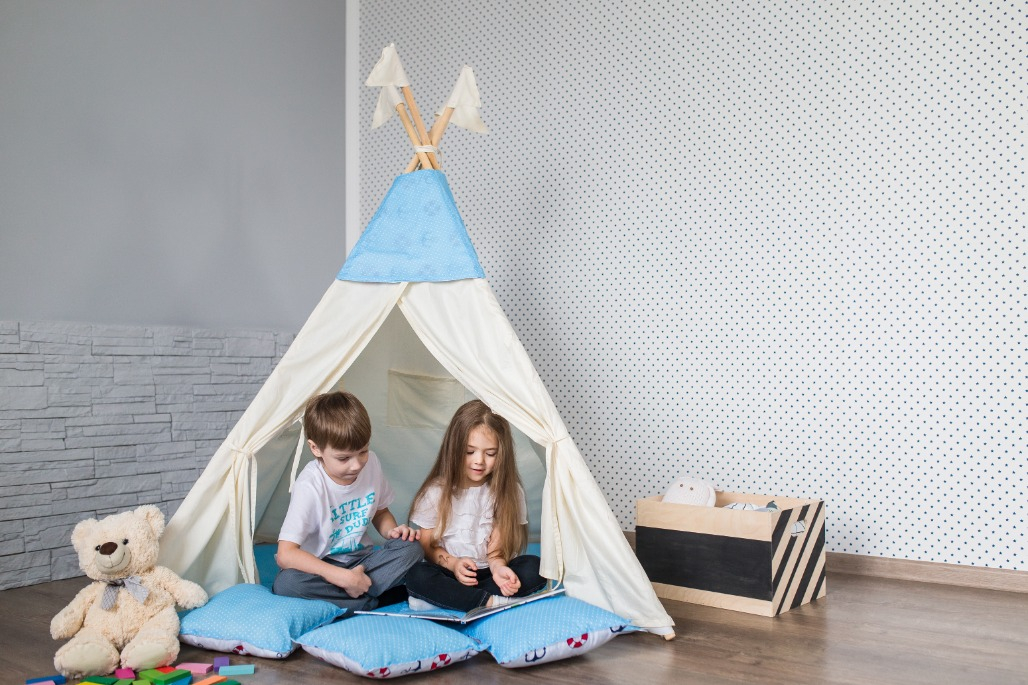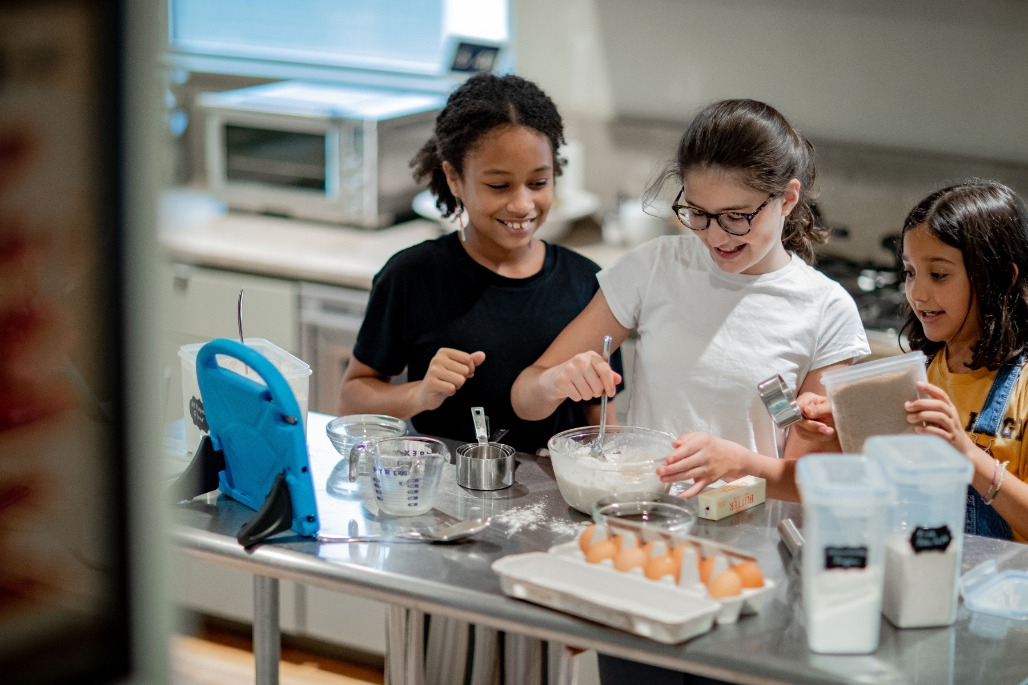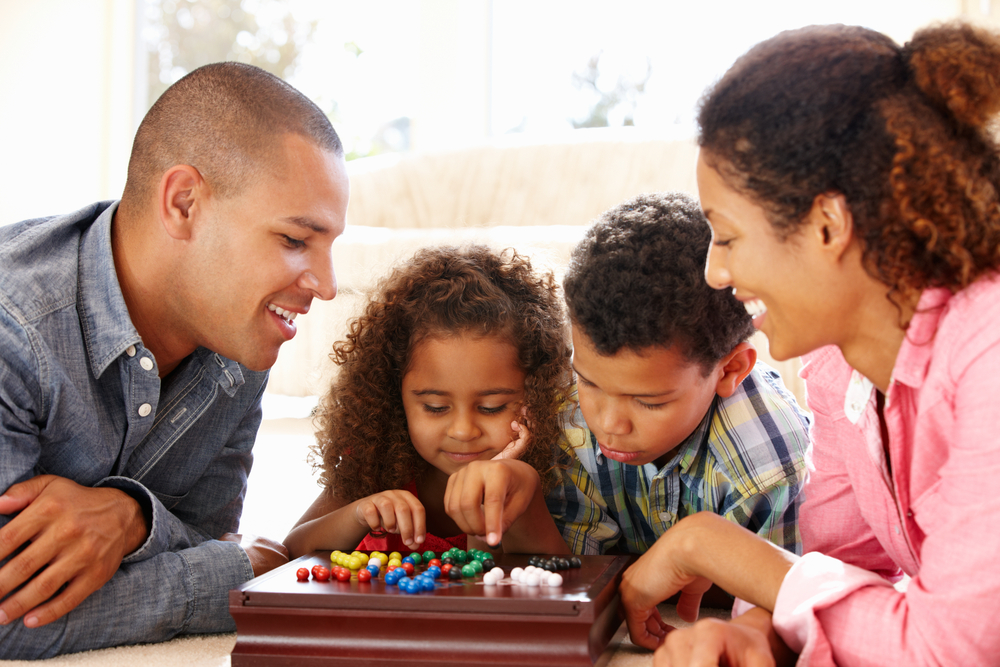The Four Ways Roblox Gives Kids More Autonomy (And Why That Matters)
“I want to do it myself!”
As parents, we’ve all heard those words many times. And the more your child grows, the more they want to do things on their own. Whether it’s pouring their own milk, taking the bus, or walking to a friend’s house, they seek independence and declare their autonomy (sometimes very loudly).
Autonomy is a person’s ability to act on their own free will. When someone, especially a child, is given autonomy, their independence, confidence, and self-esteem increase. But that’s not always the easiest thing to do.
That’s why today we’re discussing how to give your child more autonomy (without losing your sanity). We’ll be reviewing the ages and stages where kids crave (and often demand) autonomy, the benefits of giving your child more freedom, and explain how Roblox can play a role in a more freedom-filled day. Let’s get to it!
Why Kids Crave Autonomy
Children are born completely dependent on someone else. Every decision for your child was made by you — what to wear, when to eat, etc, etc.
But as they grow older, they begin to notice how their actions affect the environment around them. If they throw a plate on the floor, it breaks. If they knock over their cup, it spills. And the more they experiment, the more they learn. And it’s this drive to learn that leads them to crave autonomy.
Children like to experiment with their environment throughout their lives. Let’s look at how this need for autonomy affects children at different ages and stages.
Autonomy in Toddler, Preschool Years, and Early Elementary Years
A young child’s personality is a force to be reckoned with. Their favorite word is often “no.” And a broken banana can ruin their day.
Young kids are constantly looking for ways to gain more independence and learn new things. And this can quickly run any parent’s patience dry. But when looking at the world from their eyes, it’s easier to understand why they behave the way they do.
Kids don’t get to make many decisions. They can’t decide where to go or if they even want to go. They can’t always decide what they want to eat. And they may not get to decide what they want to wear. But boy, do they want to. And they let us know that in a variety of often creative ways.

How the Need for Autonomy Manifests in a Child’s Daily Life
Your child’s development at this stage can feel overwhelming to both of you. During this time, they feel a strong desire for freedom and self-expression. But to us, it looks like:
- Meltdowns in the grocery store
- Constantly saying “no”
- Jumping on the couch (even though they know they’re not supposed to)
- Taking a long time to clean up their toys
- Refusing help from adults
These meltdowns and struggles are your child’s attempt to better control the world around them. How can you work side-by-side with your child to give them a healthy amount of autonomy?
Appropriate Responsibilities for Young Children
These kiddos are little but mighty. There are many age-appropriate responsibilities you can give them to help resolve their craving for autonomy. Here are just a few:
- Allow them to control some parts of their morning routine. If the order doesn’t really matter, let them decide how to tackle getting ready.
- Let them make a mess. If they have their own space, set boundaries for cleanliness that you can all agree to.
- Give them some chores. Toddlers and preschoolers can sort and put away laundry and pick up toys. Older children can help with the dishes or even make a meal for the family.
- Assign them responsibilities at the supermarket. Ask them to place items from the shelves into the shopping cart.
- Ask them for help with pet duties. Show them how to give their pet water and food without making a (big) mess.
- Give them options to choose from. Ask which book they’d like to read or which outfit to wear from 2 or 3 options.
Giving your younger child more choices might be enough to help them feel independent. And if they’re frustrated with these decisions, offer help or a compromise. This will help grow your bond and remind your kiddo that you are working together as a team.
Autonomy during the Preteen Years
The early years may feel like a piece of cake compared to the preteen stage. During this time, your child’s craving for independence and autonomy is much stronger. They push to see just how much they can control while trying to discover their own limits.
How the Need for Autonomy Manifests in Your Preteens Daily Life
A preteen’s need for autonomy can feel overpowering. You may notice more arguments between you and your child or find yourself constantly repeating your requests. And even though this is all developmentally appropriate, that doesn’t make it any less frustrating.
Here are some ways your preteen may manifest their cravings for autonomy:
- Demands to spend more time playing video games with friends
- Eager to walk to school or the bus stop by themselves
- Asks for more time out with friends
- Wants to use the stove with little to no supervision
- Wishes for a later bedtime
Even though your child is older and seeking more independence, they still want your reassurance they’re doing things right. But try to avoid always commenting on their methods. If possible, sit back and provide encouragement and the occasional guidance when asked. Yes, it’s a tricky line to walk, but one that can make a big difference in your relationship with your preteen.

Preteen-Appropriate Responsibilities
More than anything, your preteen wants to know that you trust them to do things independently. But that you’ll still be there for them if needed. Here are some ways you can foster autonomy in your preteen:
- Allow them more cooking responsibilities. Let them choose a dinner idea from a cookbook and then make it themselves, start to finish.
- Set days where they can walk home. Give them the option to walk to school or the bus stop with a friend.
- Assign them house-related chores. Give them important responsibilities around the house.
- Encourage them to follow their passions. Whether it’s woodworking or building their own gaming computer, help them navigate these tasks safely.
- Allow them more cooking responsibilities. Let them choose a dinner idea from a cookbook and then make it themselves, start to finish.
By allowing your preteen this space for independence, they’ll know you trust them with more “adult” responsibilities. And that is a huge deal in their world. Embracing your child’s decisions when they’re taking on big tasks boosts their self-esteem and encourages cognitive development.
Autonomy in Teenagers
By the time your child’s a teenager, their understanding of the world and confidence in their abilities has increased a ton. As a teen, they’re better able to handle their emotions on their own, but this doesn’t mean they won’t still need or want your support. It just may feel far less often than when you helped them navigate their previous years.
As a teen, they better see adults as real people with faults. And they turn more often to their peers for advice and emotional support. In these moments, your child is learning how to compare choices, make their own decisions, and face the consequences of their actions (or inactions).
This helps them discover who they are while increasing their trust in themselves. And even though they have more freedom than in years past, their craving for autonomy has only grown.

How the Need for Autonomy Manifests in Your Teen’s Daily Life
These years can be challenging. Parents want their teens to communicate more. But often it feels like they’re pulling away. Once again, this is all developmentally appropriate. But that doesn’t make it any easier.
Here are a few ways your teen may seek more autonomy in their daily lives:
- Questioning and violating the rules you’ve set for them
- Refusing to do their chores
- Spending more time outside of the home
- Choosing outfits or music you don’t approve of
- Expressing personal, political, and social beliefs that put you at odds
As your teen continues to grow, they’re eager to do more “adult” things. They want to spend more time outside their home, vote, drink, work, and drive — the list is endless.
So what can you do to help your teen get the autonomy they crave and keep your relationship healthy?
Teen-Appropriate Responsibilities
By working together with your teen, you can foster a wonderful relationship that will carry over into their adulthood. All while helping them become responsible, confident adults. And one way you can do that is by giving them plenty of room to practice new skills.
As they practice new things, be ready to share your guidance and support. They may act like they don’t need it or want it, but they do.
Here are a few ways you can give them more autonomy and support:
- Set expectations. Set rules together around their driving privileges, curfew, employment, etc. And be open to rehashing these conversations as they get older.
- Provide a safe space. Give your child a safe space to communicate openly with you about their expectations, consequences, and experiences.
- Show interest in their world. If they love playing Roblox and video games, try playing with them. If they want to pursue photography, ask them about their favorite style. This helps start conversations, giving you more opportunities to connect.
- Give them freedom of expression. Allow them the space to decorate their room or wear something that isn’t your style.
- Ask them to help with planning. Ask for their input on everything from family vacations to daily planning.
Though teens often look more to their friends for help, research shows they still place worth in their parent’s advice when it comes to ethics, morals, the future, and more.1 Keeping an open line of safe communication is crucial in this stage.
There’s a pattern for helping your child gain the autonomy they crave in every stage. You just need to give them a little more freedom beyond what’s standard in today’s society.
Not sure where to start? There’s already one place where kids are finding more autonomy — Roblox.
4 Ways Roblox Gives Your Child the Freedom They Need
Times are changing. In today’s world, children are finding more play in digital spaces. And Roblox is likely one of the most popular words in their vocabulary. But why is this online gaming platform so popular?
There’s a whole variety of reasons, but one of the big ones is the amount of autonomy it provides players. And a huge bonus — as your child plays games on Roblox, they’re learning important skills like critical thinking and digital citizenship!

Here are 4 ways Roblox fosters autonomy in your child’s day.
1. Choosing their style
In Roblox, your child creates an avatar to represent them as they play. And there are tons of customizations to choose from — including facial expressions, clothing, and even how they run and jump.
Their avatar gives your child the freedom to experiment with different personas. Depending on their mood, they can rock rainbow hair one day, then switch it up to dark and mysterious the next. Their virtual style can always reflect how they feel. And, especially for those older kiddos, that’s pretty cool.
Trying these different styles helps your child explore their interests, try new things, and even see how others relate to them — all within the virtual reality of Roblox. There’s a little bit of everything inside the avatar settings — allowing your child to find what truly suits their style.
2. Exploring their interests
There’s a game for just about everything inside Roblox. Whether your child wants to be a chef, deliver pizzas, run through mazes, explore Godzilla monsters, or become a unicorn, they can do it here.
And as they play, they also get to meet others with the same interests. Each game includes chat (including a voice option for those 13+) to communicate with other players in the game. They may chat about their characters or game strategy, and there may be the occasional gaming banter. But all of this social interaction is great for building their social skills.
Many games help players learn more about their areas of interest. And there are literally millions of games to enjoy across a variety of gaming genres. The best part — if your child doesn’t enjoy a game, there are no major impacts. You’re not buying dance lessons for a whole semester just to find out they actually hate it two classes in.
With Roblox, they can explore a variety of interests without any major consequences.
3. Spending Their Money
Roblox has its own currency, called Robux. With this currency, your child can buy new clothes for their avatar or purchase special items inside an experience. Having their own currency in the digital platform allows your child to buy whatever they want without adults telling them what they should or shouldn’t buy.
With this freedom to buy what they choose, they learn what’s worth their money and what’s not. Your child can experience saving to buy something they really want. And also learn how to not repeat purchasing mistakes. Or they may end up buying something that brings them immense joy — something you would have never thought of purchasing for them.
Kaylee, a Roblox-loving kiddo, says, “If I were to spend money in real life, I’d have to ask my parents to take me to stores. I have control over what I buy on Roblox.” And that makes all the difference.
4. Speaking their mind
As the world evolves, so do the ways your child connects with their peers. Roblox is now a favorite way for many kids to come together and play. Some have even called Roblox the new playground. Why?
Because kids need a space away from adults to practice social interactions. They need to learn how and when to speak up while also discovering the importance of showing kindness to others. And while parents want to be there every step of the way, it’s crucial to let your child handle most social interactions themselves. Giving them space to express their autonomy better prepares them for adulthood.
Even though it can sound scary, socializing away from adults is incredibly beneficial for your child. While they definitely still need you to share the dangers of online interactions and what to look out for, they also need you to give them some space to just be kids.
Giving your child the space to be silly, talk a little smack, and make jokes with friends without adult supervision can improve their social understanding, empathy, and emotional intelligence. And bonus — it can also strengthen your relationship with your child. Because they know you trust them and are there for them if needed.
Your Child Can Find more Autonomy and Learning in Roblox with Kinjo
If you want to give your child more online freedom to learn and grow, Kinjo can help! When combined with Roblox, Kinjo guides your child to choose the best Roblox experiences for learning and skill building. They’ll be working on skills like money management, problem-solving, and teamwork while also gaining a boost in their confidence, self-esteem, and happiness.
Download Kinjo – Play Smart and Earn on your child’s device and give your family the best in online, play-based learning today.
Resources:








